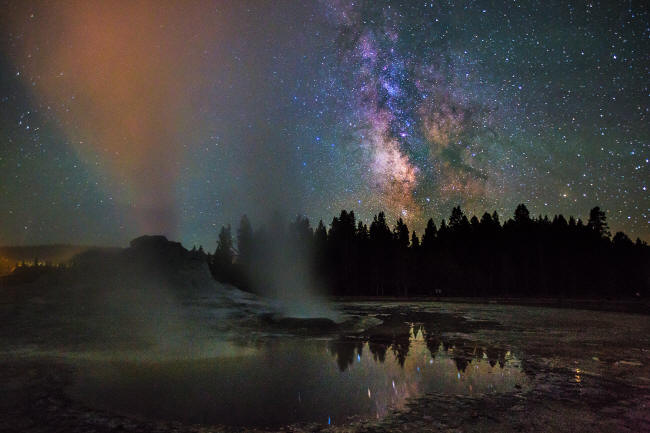|
by Marco Gersabeck
from
TheConversation Website as seen from Yellowstone National Park. Neal Herbert/Flickr
This is arguably the most
profound question there is and one that may seem completely outside
the scope of particle physics. But our
new experiment at CERN's
Large Hadron Collider has taken us
a step closer to figuring it out.
This event produced equal amounts of the matter you are made of and something called antimatter. It is believed that every particle has an antimatter companion that is virtually identical to itself, but with the opposite charge.
When a particle and its
antiparticle meet, they annihilate each other - disappearing in a
burst of light.
Our research has
unveiled a new source of this
asymmetry between matter and antimatter.
The positrons occur in natural radioactive processes, such as in the decay of Potassium-40.
This means your average banana (which contains Potassium) emits a positron every 75 minutes. These then annihilate with matter electrons to produce light.
Medical applications like
PET scanners produce antimatter in the same process.
There are six kinds of quarks:
Similarly, there are six leptons:
There are also antimatter
copies of these twelve particles that differ only in their charge.
Neutral mesons have a fascinating feature:
But experiments have shown that this can happen more in one direction than the opposite one - creating more matter than antimatter over time.
The very first observation of asymmetry involving strange particles in 1964 allowed theorists to predict the existence of six quarks - at a time when only three were known to exist.
The discovery of asymmetry in bottom particles in 2001 was the final confirmation of the mechanism that led to the six-quark picture.
Both discoveries led to
Nobel Prizes.
LHCb. Maximilien Brice et al.
CERN
The only positively
charged quark that in theory should be able to form particles that
can exhibit
matter-antimatter asymmetry is
charm. Theory suggests that if it does, then the effect should
be tiny and difficult to detect.
This is made possible by
the unprecedented amount of charm particles produced directly
in the LHC collisions, which I pioneered a decade ago. The result
indicates that the chance of this being a statistical fluctuation is
about 50 in a billion.
And that's important as the few known cases of asymmetry can't explain why the universe contains so much matter.
The charm discovery alone will not be sufficient to fill this gap, but it is an essential puzzle piece in the understanding of the interactions of fundamental particles.
But more importantly, it
will outline further tests to deepen the understanding following our
finding - with a number of such tests already ongoing.
These are exciting
prospects for research into matter-antimatter asymmetry.
The
AMS-2 experiment
(aboard
the International Space Station)
is on the lookout for antimatter of cosmic origin. And a number of
current and future experiments will tackle the question of whether
there is antimatter-matter asymmetry among neutrinos.
There's every reason to
be optimistic that physics will one day be able to explain why we
are here at all...
|



